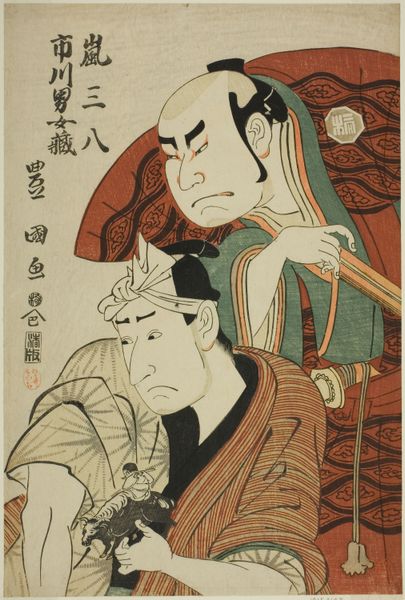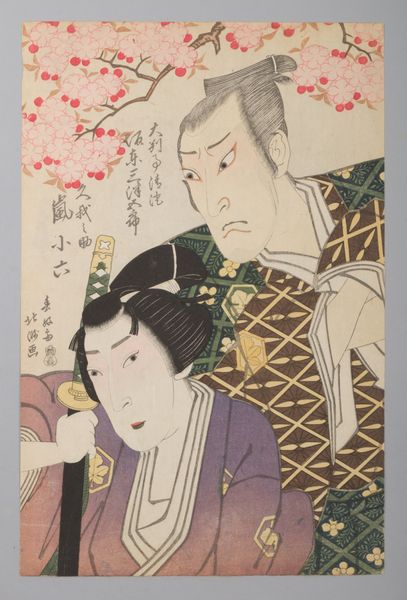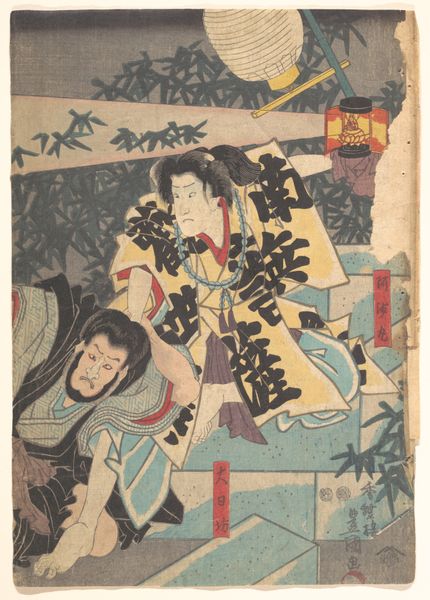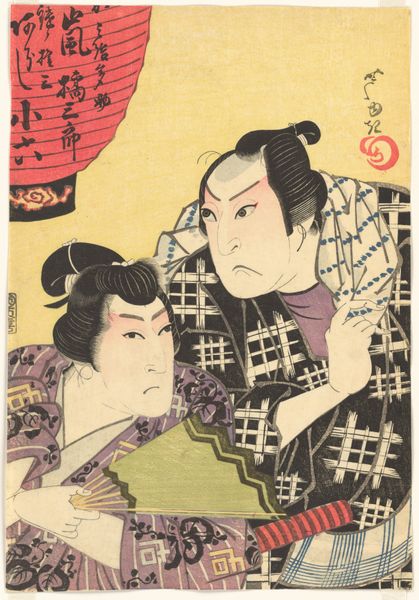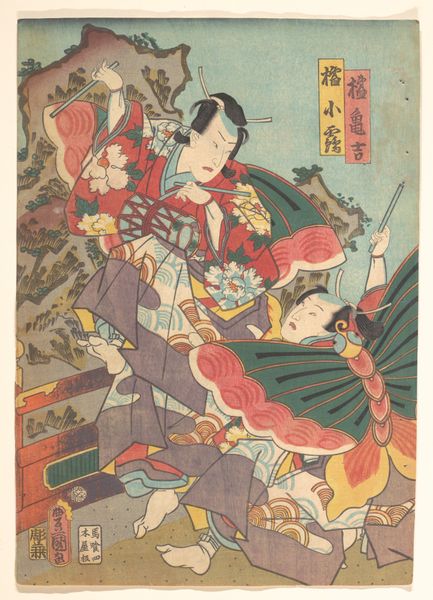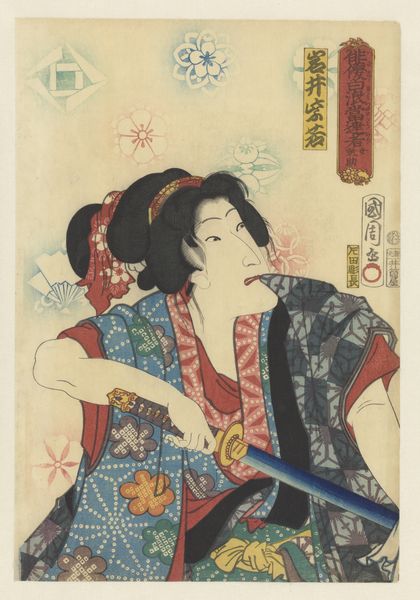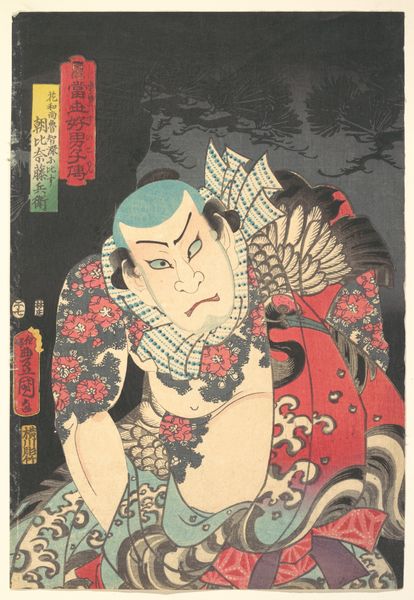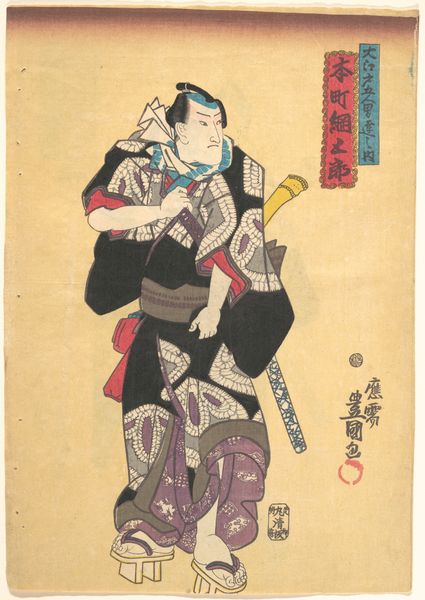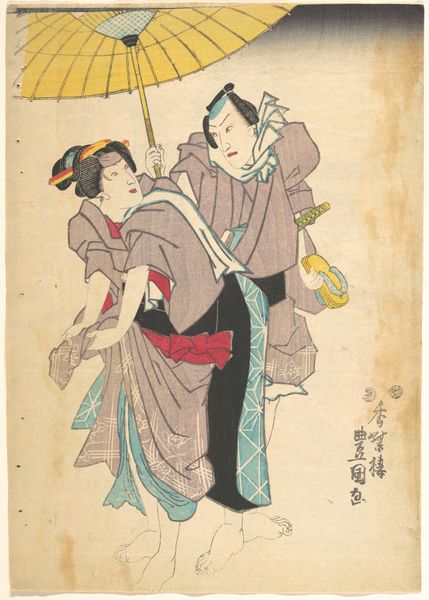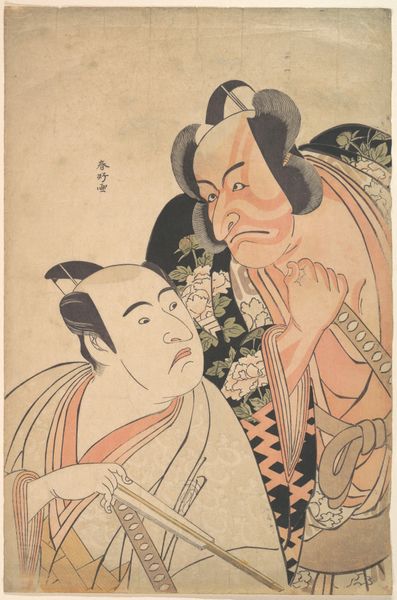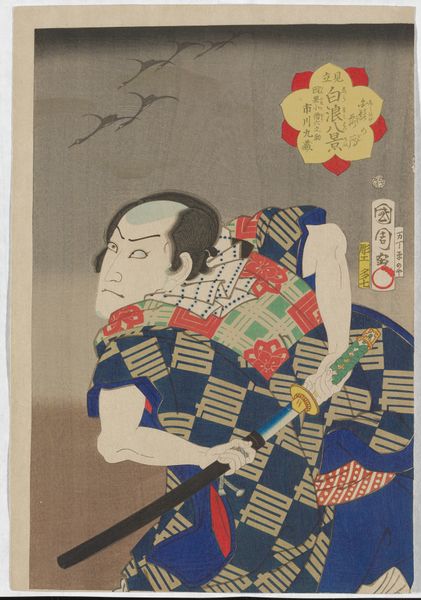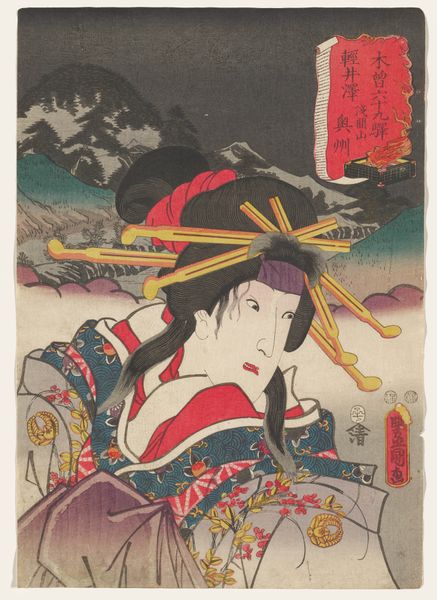
Actors Nakamura Utaemon IV as Honjōmaru Tsunagorō (R) and Bandō Shuka I as Ofusa's younger sister Koito (L) Possibly 1849
0:00
0:00
print, ink, woodblock-print
#
portrait
#
narrative-art
# print
#
ukiyo-e
#
figuration
#
ink
#
woodblock-print
Dimensions: 14 3/8 × 9 5/8 in. (36.5 × 24.5 cm) (image, sheet, vertical ōban)
Copyright: Public Domain
Curator: This woodblock print, likely from 1849, is by Utagawa Kunisada. It's called "Actors Nakamura Utaemon IV as Honjōmaru Tsunagorō (R) and Bandō Shuka I as Ofusa's younger sister Koito (L)". You can find it here at the Minneapolis Institute of Art. Editor: Immediately I’m struck by how intensely the figures are presented, almost confrontational in their scale, looming from the darkness behind. The expressions are incredibly captivating and dramatic. Curator: It captures a very specific cultural moment. These are portraits of actors, celebrities really, playing roles within a Kabuki play. Prints like these, called Ukiyo-e, were incredibly popular ways to disseminate these images beyond the theatre walls. Editor: There’s such raw emotion being conveyed through posture alone. The woman, with hands clasped in what seems to be desperate pleading, juxtaposed with the male figure’s stoic yet undeniably burdened stance... What's the story being captured, or hinted at here? Curator: Ah, so Kabuki plays often dealt with familiar historical events, or folk tales that audiences were well acquainted with, but it is a narrative now mostly unknown. It focuses less on historical accuracy, however, than on dramatic interpretations and performance. Kunisada cleverly leverages that immediate recognition to highlight not just the story, but the *performers* embodying those roles. Their fame became intertwined. Editor: It’s a fascinating intersection of art, performance, and celebrity culture! The visual language itself feels almost cinematic, like a close-up from a film. It feels like a timeless exploration of emotion that somehow transcends the specific story, don't you think? Curator: That's a sharp insight. These Ukiyo-e prints allowed ordinary people a glimpse into the otherwise exclusive realm of Kabuki theatre and the stars who populated it. Consider them akin to the trading cards of the time, affordable and wildly popular. Editor: Which then adds another layer, doesn't it? Because we are now seeing it outside of that context, in a museum, and therefore removed from its commercial function. So we project ourselves differently onto the characters, their stories... I can imagine endlessly reinventing the narrative, lost in their powerful, frozen gestures. Curator: And yet, even removed, the impact remains. It's a potent reminder of art's enduring ability to bridge time, culture, and human experience. Editor: Exactly, those emotional currents rippling across time! Definitely makes one consider the different performances and roles one plays in one's own daily life.
